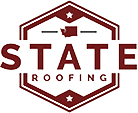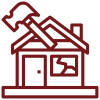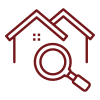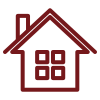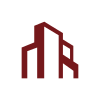In 2018, Seattle ranks as the third hottest housing market in the country, according to Zillow. This makes standing out among the competition very difficult as homes in both Seattle and surrounding areas continue to appreciate.
Will upgrading your appliances help increase your home value and stand out among the crowd? Maybe redoing your kitchen or bathroom will take care of the job? It turns out that if you’re looking to increase your home’s value, you should look to replace your roof with a rubber roof. Here are the four reasons why rubber roofs will improve your home value.
If you take a walk around your neighborhood or any neighborhood in the Pacific Northwest, you’ll notice that the most common roofing material is asphalt shingles. That’s because they’re the most affordable roofing material. However, you shouldn’t mistake affordable with cost-effective. Asphalt shingles only last up to 25 years, meaning they have the shortest lifespan compared to any other roofing material out there. While rubber roofs have a higher upfront cost, they are significantly more cost-effective since their estimated lifespan is up to 75 years or longer—that’s three times longer than asphalt shingles!
Here are some great benefits that show off the durability of the rubber roofs we offer here at State Roofing:
- Features tongue-and-groove interlocking tiles that offer a tight fit to keep rain out
- Protects against the deteriorating effects of leaves, pine needles, moss, and algae
- Highly resistant to the impact from falling tree branches and leaves
- Resistant to splitting, cracking, curling, and other surface wear
- Designed to be walked on without any restrictions
- Tested to withstand winds up to 140 MPH
- Proven to be resistant to fire and hail
- Designed to be walked on without any restrictions
- Highly resistant to falling tree and branch impacts
- Resistant to splitting, cracking, curling, and other surface wear
- Resistant to the deteriorating effects of leaves, pine needles, moss, and algae
- Features tongue-and-groove interlocking tiles for a tight fit
Rubber roofs are green
Homeowners are looking for ways to reduce their footprint and are adopting green lifestyles. In fact, 48% of people on the market to buy a home list energy efficiency as a desired home characteristic, according to Zillow’s 2017 Consumer Housing Trends Report. To meet this demand, look for roofing materials that are not only eco-friendly but ones that also improve your home’s energy efficiency.
Rubber roofs are just that. This type of roofing material reflects the sun’s heat during the warmer months—especially the lighter-toned rubber roofs, which will help reduce air-conditioning costs. During the cooler months, rubber roofs are exceptional at insulating the home in that they trap heat, which helps to reduce heating costs.
In addition, rubber roofs are made from approximately 95% recycled material, and the best part is that any scraps produced in the installation process can be recycled again. In fact, rubber roofs were developed with the goal of reducing the number of used tires that end up in landfills, which is 246 million in the U.S. per year to be exact. Whenever a homeowner installs a rubber roof, they’re diverting 250-1,000 tires from landfills.
With a green roofing material, homes can be marketed as being energy-efficient, thus increasing the overall value of your home and making it more appealing to buyers.
Homeowners don’t want to spend their free time making home repairs, especially ones that involve climbing on top of the roof. While rubber roofs may not directly impact the monetary value of a home, it can improve a potential buyer’s first impression of the home.
Traditional roofing materials such as asphalt shingles are incredibly high-maintenance, requiring consistent repairs. They are prone to warping, curling, and cracking over time, making them a less-than-desirable and time-consuming roofing material.
On the other hand, rubber roofs are virtually maintenance-free. As mentioned above, they’re resistant to splitting, cracking, curling and other surface wear. Rubber roofs are also resistant to common moisture-related issues such as deterioration from leaves, pine, needles, moss, and algae.
Rubber roofs are ideal for the Pacific Northwest
When we say it rains a lot in the Pacific Northwest, it might be an understatement. Homeowners are looking for a roofing material that is suitable for the wet environment and one that can also hold up against the year-round moisture. The thing to keep in mind is that asphalt shingles are extremely porous, which makes them prone to mold and algae. If the mold and algae aren’t cleaned off in a timely manner then you could start to experience wood rot, which could possibly spread to the interior of your home.
Rubber roofs like the Euroshake and the Euroslate both feature tongue-and-groove interlocking tiles that offer a tight fit, which helps to keep the rain out. Rubber roofs are laid down in sheets, creating limited seems for water to seep in, causing damage to your roof. In addition, they’re resistant to UV rays and strong winds, making them ideal for the unpredictable weather in the Pacific Northwest.
Rubber roofs are a fairly new type of roofing material, but they’re making waves in the industry with their superior build. This roofing material is incredibly durable, lasting up to 75 years or more. They’re resistant to common roofing ailments such as splitting, cracking, and curling. Choosing a green roofing material will also be an appealing factor, considering that 48% of home buyers are looking for an energy-efficient home. One of the most appealing characteristics of a rubber roof is that they’re virtually maintenance-free. Lastly, rubber roofs are great for the Pacific Northwest due to their non-porous material and tongue-and-groove design that keep the rain out.
Want to increase the value of your home with a rubber roof? Give us a call at (360) 794-7164 or fill out our contact form for further inquiries or to request a free estimate in Seattle, Tacoma, Olympia, Bellevue, Snohomish, Sammamish, or any surrounding areas.
